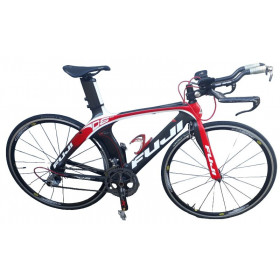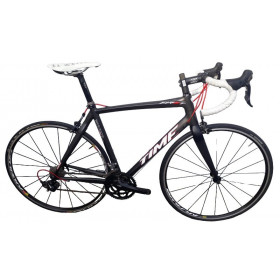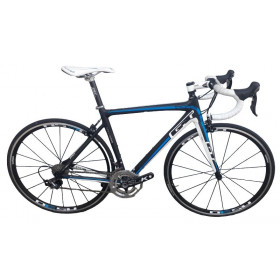-
 UsedUsed time trial bike Fuji D6 3.0 size S
UsedUsed time trial bike Fuji D6 3.0 size S- €1,099.00
-
 New product -40%Carbon road bike Time Fluidity First size S
New product -40%Carbon road bike Time Fluidity First size S- €1,619.40
- €2,699.00
-
 New product -45%Carbon road bike GT GTR PRO size M
New product -45%Carbon road bike GT GTR PRO size M- €1,484.45
- €2,699.00
Showing 1-3 of 3 item(s)
Road bikes are designed specifically for riding on paved roads and offer certain characteristics that make them well-suited for efficient and fast riding.
Here are some key characteristics of a road bike:
Lightweight :
Road bikes are typically lightweight, allowing for easier acceleration and maneuverability. They are built using lightweight materials such as carbon fiber, aluminum, or titanium to reduce overall weight without compromising strength and durability.
Drop Handlebars :
Road bikes feature drop handlebars that provide multiple hand positions, allowing riders to change their grip and posture for comfort and control. The dropped position on the handlebars allows for a more aerodynamic riding position, reducing wind resistance and improving speed.
Narrow Tires :
Road bikes have narrow tires with smooth or lightly treaded surfaces. These tires reduce rolling resistance on pavement, allowing for faster speeds and better efficiency. The tire pressure is usually higher compared to other types of bicycles, which further minimizes rolling resistance.
Geometry :
Road bikes have a specific frame geometry optimized for speed and efficiency. They typically have a longer top tube, shorter wheelbase, and steeper head tube angle, which positions the rider in a more aerodynamic and forward-leaning posture. This posture helps reduce wind drag and optimize power transfer to the pedals.
Gearing :
Road bikes usually have a wide range of gears to accommodate varying terrains and riding conditions. They often feature multiple chainrings at the front and a cassette with several sprockets at the rear, allowing riders to choose the appropriate gear for different gradients and speeds.
Stiffness :
Road bike frames are designed to be stiff, meaning they resist flexing during pedaling. This stiffness allows for efficient power transfer from the rider's legs to the pedals, ensuring minimal energy loss. Stiffness also contributes to the bike's responsiveness and handling characteristics.
Braking System :
Road bikes traditionally used rim brakes, where brake pads grip the wheel rims to slow down or stop the bike. However, many modern road bikes now come with disc brakes, which offer improved stopping power, better modulation, and enhanced performance in wet conditions.
Aerodynamics :
Road bikes are designed with aerodynamics in mind. The frame tubes and shapes are often optimized to reduce drag and improve airflow around the bike and rider. Components such as aero seatposts, integrated handlebars, and deep-section wheels further enhance aerodynamic performance.
Limited Accessories :
Road bikes are focused on speed and efficiency, so they typically have limited attachment points for accessories like racks and fenders. This design choice reduces additional weight and wind resistance, allowing riders to maintain high speeds.
Efficiency and Speed :
With their lightweight construction, aerodynamic design, and efficient power transfer, road bikes are specifically engineered to maximize speed and efficiency on paved roads. They are well-suited for long-distance rides, racing, and group rides where maintaining a higher average speed is a priority.
These characteristics make road bikes ideal for riders seeking fast-paced rides, road racing, endurance rides, and overall road cycling performance. However, it's important to note that road bikes may not be the most suitable choice for off-road or rough terrain riding.
Others road bike components :







